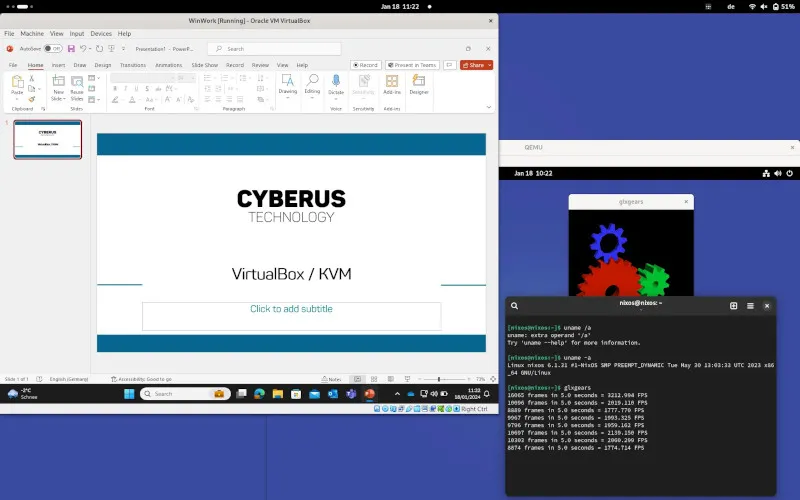Making use of Linux’s Kernel-based Virtual Machine (KVM) opens up new possibilities while users can still enjoy the VirtualBox VMM itself. The KVM support is part of the mainline kernel so there is less worries with not having to use the VirtualBox kernel driver, KVM tends to support new features quite quickly, and tends to be more actively developed than VirtualBox and is embraced by a range of organizations. Early users of this backend by Cyberus customers are said to be experiencing better performance too.



deleted by creator
Yes but from the looks of it, this isn’t using the libvirt backend, so you won’t be able to use/configure your Box VMs with virt-manager/Cockpit, in case you were planning on doing that - aka it’s not going to turn VBox into yet another fronted for libvirt. But it does indeed use KVM.
Putting aside the easier-to-use GUI, it has certain unique features not found in other opensource hypervisors, such as seamless mode. Also, it may have better compatibility or performance with certain operating systems - for instance, when I wanted to test GhostBSD on virt-manager, I ran into lot of issues, such as not being able to install it in UEFI mode, mouse not working etc; whereas it ran and installed without any issues at all using VirtualBox.